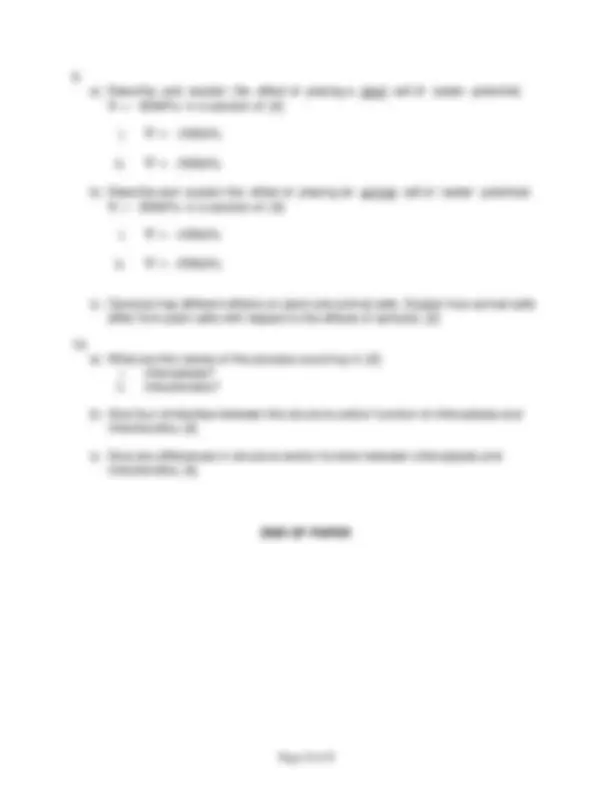



Study with the several resources on Docsity

Earn points by helping other students or get them with a premium plan


Prepare for your exams
Study with the several resources on Docsity

Earn points to download
Earn points by helping other students or get them with a premium plan
Community
Ask the community for help and clear up your study doubts
Discover the best universities in your country according to Docsity users
Free resources
Download our free guides on studying techniques, anxiety management strategies, and thesis advice from Docsity tutors
Animal Cells, Cells or Organisms, Yeast Cell, Cell Division, Salicylic Acid, Facilitated Diffusion, Plants Suffering Water Stress, Smooth Endoplasmic Reticulum, Formation of Lysosomes, Structure of Ribosomes are some points from questions of Biology of the Cell subject.
Typology: Exams
1 / 3

This page cannot be seen from the preview
Don't miss anything!


ARHOLIADAU EXAMINATIONS
Time allowed: TWO HOURS.
Answer ALL questions.
Answer questions in the answer book provided. Numbers in square brackets indicate the marks for each section.
a) To which kingdom do the following cells or organisms belong? [4]
i. A diatom. ii. A neutrophil. iii. A yeast cell. iv. Paramecium.
b) The above are all examples of what type of cell? [2]
c) List four possible fates for animal cells following cell division. [4]
a) Do the following solutes pass readily through the membrane or not? What feature of each solute explains your answer? [4]
i. Na+ ii. Glucose. iii. O 2 iv. Salicylic acid.
b) Draw a simple graph showing facilitated diffusion. [3]
c) List three reasons for plants suffering water stress. [3]
a) Describe (or draw) the appearance of rough and smooth endoplasmic reticulum and give one function for each type. [6]
b) Draw a simple figure to show endocytosis and formation of lysosomes. [4]
Continued on next page.
a) Describe the structure of ribosomes and state their function. [5]
b) Draw a labeled figure of a nucleus as seen under the electron microscope. [5]
a) Name two mechanisms of movement in bacteria. [2]
b) What is the bacterial proton motive force and why is it important in movement. [4]
c) Draw a labeled cross-section of a eukaryotic flagellum. [4]
a) Name the three main layers in the cell wall of mature, fully-expanded plant cell and give a major constituent of each layer (name a different constituent for each layer). [6]
b) Give a function for each of the following proteins involved in cell adhesion and the extracellular matrix. [4]
i. Collagen. ii. Fibronectin. iii. Cadherins. iv. Laminins.
a) Give one distinguishing characteristic for each of the following three types of muscle cell. [3]
i. Cardiac. ii. Skeletal. iii. Smooth.
b) Draw a figure illustrating ion movements during the action potential, making sure that you clearly identify the ions involved, the plasma membrane proteins responsible for the action potential, and the relevant potential differences (voltages). [7]
a) Draw a fully labelled diagram of a cell membrane. [6]
b) Give the function of FOUR of the components of the cell membrane. [4]
Continued on next page.